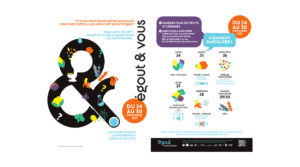Soutenance de thèse
Pierre Tiengou
METIS
Modelling the regional impacts of irrigation on the climate, water cycle, and atmospheric boundary layer over the Iberian Peninsula
Résumé
Irrigation is a widespread agricultural practice expected to keep expanding in the future. It is recognized as a major anthropogenic driver of land-atmosphere interactions, significantly affecting regional climate, continental and atmospheric water cycle components, surface energy balance, and the atmospheric boundary layer (ABL). Under climate change, in semi-arid regions like most of the Mediterranean basin, it is associated with major challenges regarding water availability, increased evaporative demand, and disrupted precipitation patterns, justifying efforts to understand and represent the diversity of its impacts.
This thesis investigates the regional effects of irrigation on the water cycle, climate, and the atmospheric boundary layer over the Iberian Peninsula using the ICOLMDZOR limited area model (LAM) at 25-kilometre resolution. This new regional climate model stems from the global climate model developed at Institut Pierre-Simon Laplace (IPSL-CM), using the ORCHIDEE land surface model with a new routing scheme, and the ICOLMDZ atmospheric model. The LAM is evaluated over the region under recent climate (2010-2022), and simulations with and without irrigation are compared to isolate its impacts. Simulations of future climate under the SSP5-8.5 scenario are also analysed to assess how these impacts interact with those of climate change.
This work first demonstrates the dominant influence of irrigation on the ability of the land surface model to simulate river discharge in offline simulations. It identifies an appropriate set of parameters for the river routing and irrigation schemes over the Iberian Peninsula, to adapt to a 1-arcminute resolution topography and better reflect regional irrigation practices.
Using this improved representation of the land surface, coupled LAM simulations reveal that the atmospheric impacts of irrigation mainly consist in a cooling and moistening over irrigated areas and a stabilization of the ABL. Partial recycling of atmospheric moisture is identified at the scale of the Peninsula, with increases in precipitation in mountainous regions surrounding the intensely irrigated Ebro Valley. The atmospheric processes at play are analysed in more details by comparing the ICOLMDZOR LAM to point-based observations (surface measurements and radio-soundings) from the Land Surface Interactions with the Atmosphere over the Iberian Semi-Arid Environment (LIAISE) campaign, held in the Ebro valley in July 2021. In a sensitivity experiment with increased water availability for irrigation, surface fluxes are found to be greatly improved compared to observations. In comparison to Meso-NH simulations at 2-kilometre resolution, surface variables in the ICOLMDZOR grid cell for the irrigated observation site match the average of Meso-NH grid cells it contains. This suggests that the modelling approach for irrigation and surface fluxes used in ICOLMDZOR is sufficient to represent grid-cell average impacts at the surface. However, although the cooling and moistening effects of irrigation are found to extend vertically into the ABL, ICOLMDZOR does not achieve as good performance in ABL representation as in surface variables. This is likely attributed partly to a lack of sub-grid heterogeneities, in surface fluxes, but also in wind speed and direction, and to advection terms that do not perfectly reflect observed weather conditions of the campaign.
Overall, this PhD work presents a first use-case of the new ICOLMDZOR LAM for the study of land-surface interactions at the regional and climatic scales, with visible impacts of irrigation on river discharge, precipitation, surface variables and ABL development. Several biases of the ICOLMDZOR LAM over the region were also identified and partly corrected, and possible improvements are presented for upcoming regional climate modelling studies.
Informations supplémentaires
The presentation will be given in English.
Lieu
Sorbonne Université
4, place Jussieu 750055 Paris
Bâtiment Esclangon
Amphithéâtre Astier
Composition du jury
- Fabienne LOHOU, Professeure des universités, LAERO – U. Toulouse III (Rapportrice)
- Isabelle BRAUD, Directrice de Recherche, INRAE RiverLy (Rapportrice)
- Jean-Louis DUFRESNE, Directeur de Recherche, LMD – Sorbonne U. (Examinateur)
- Romain ROEHRIG, Ingénieur des Ponts, des Eaux et des Forêts, CNRM (Examinateur)
- Martin BEST, Science Fellow, UK Met Office (Examinateur)
- Aaron BOONE, Directeur de Recherche, CNRM (Examinateur)
- Agnès DUCHARNE, Directrice de Recherche, METIS – Sorbonne U. (co-directrice de thèse)
- Frédérique CHERUY, Chargée de Recherche, LMD – Sorbonne U. (co-directrice de thèse)






